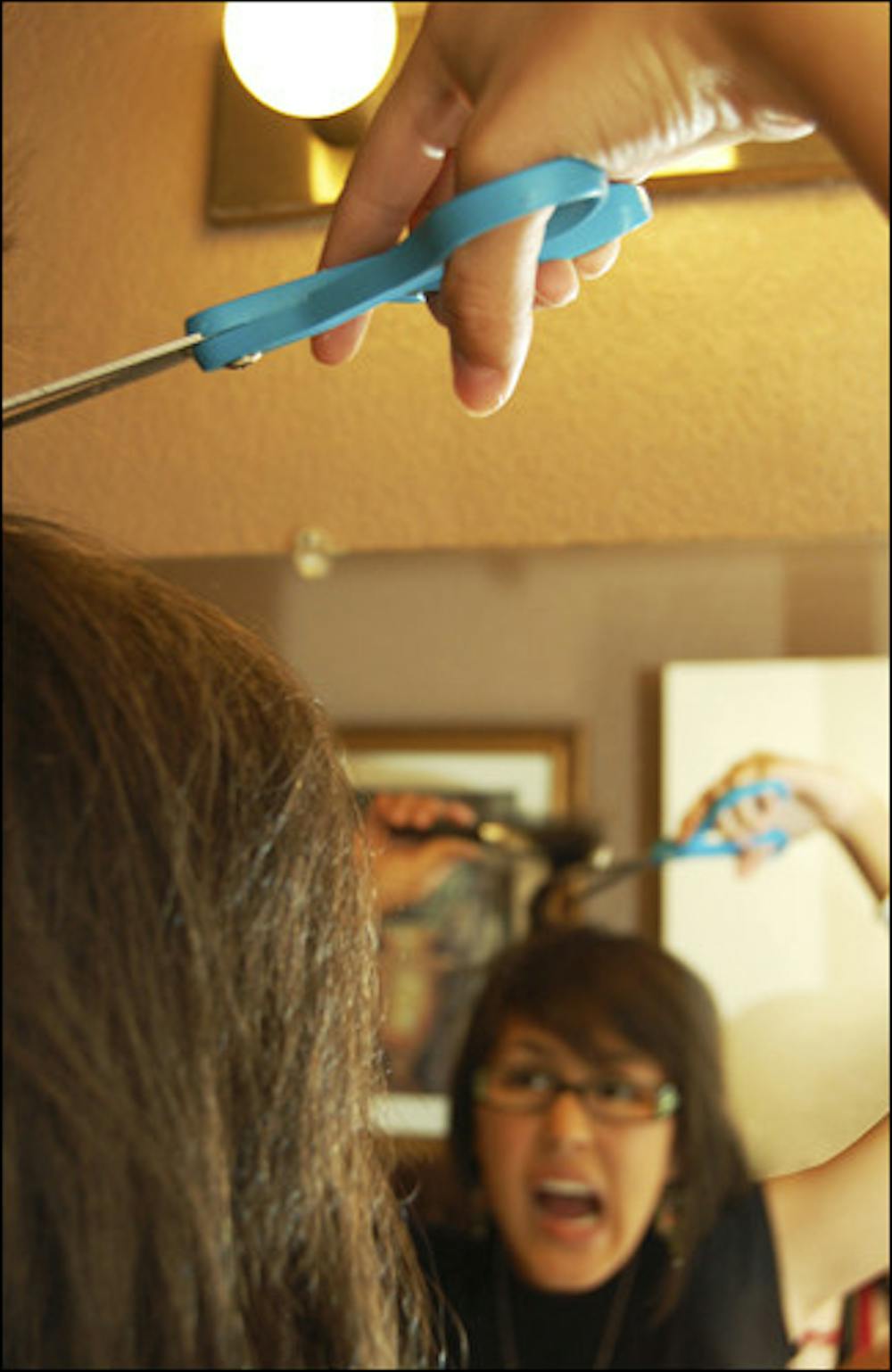When it comes to one's appearance, a bad dome-piece can really muck up someone's entire look. With the Valley's intense sun and the current hair-straightening craze, dry and damaged hair is becoming less of an embarrassment and more of a norm.
The people in the hair business have an answer to this: buy more crap. Not everyone has the deep pockets to hit up the salons for hair treatments. Not everyone has the knowledge the professionals do on what damaged hair actually is or how to go about fixing it. Here are the tips of damaged hair aficionados that range from special shampoos to home remedies and other simple steps.
1. Drink more water: Seriously, this is more helpful than you think. The more water downed, the healthier one’s nails, skin and hair.
2. Take vitamins: Daily doses of iron or Vitamin A, B, C and E are always a good idea for hair growth, but taking a simple multivitamin will do wonders.
3. Keep up with the trims: “Trim your ends every six weeks if you want it to grow and not look unhealthy,” business tourism junior Caitlin Watson says. Watson received her cosmetology license while she was in high school and now does hair at Sasi Salon in Tempe. She says it is important to keep up with trimming “because when your ends split, they just keep spliting until it hits the scalp and breaks off, causing you hair to be shorter.”
4. Use hair treatments: “Treatments like Bumble & Bumble Creme de Coco Masque and Kerastase protein treatments do wonders for damaged hair,” nursing and nutrition sophomore Chelsea Taylor says. “I have really thick, unruly curls, and doing hair masques weekly and not using heat styling products really helps my hair to grow.”
5. Avoid pools: It might go without saying that chlorine is no good for hair in general, but this is Phoenix. Visual communications sophomore Sarah Ann Thomas, a stylist at Robert Paul Salon in Chandler, has some tips for those who just can't dodge the pool bug. Thomas suggests to pre-wet hair and use leave in conditioner to act as a barrier against the chlorine. “Blondes can benefit from that one so they don't get green hair,” she says.
6. Use folk remedies: “I've also heard that avocado is wonderful for your hair,” Taylor says. This is just one of the many remedies people have available for damaged hair. Another good one is to use actual conditioner as a styling serum. The conditioner sits on hair and soaks in as it holds curls and helps with straightening. Ketchup is rumored to neutralize green hair, and white vinegar is rumored to strip hair of built up chemicals from dye and other junk. Just try to keep an open mind. Journalism junior Lauren Kawam says her mom was dirt poor, growing up in the ’70s with intense curly hair. “She would painstakingly bend over an ironing board and iron her hair,” Kawam says, “Then, before the heat escaped, she would just spritz her hair with cheap beer.” Kawan says this practice using Pabst Blue Ribbon or Old English helps with volume, shine and fly-aways.
7. No washing: Try cutting back on washes to every third or every fourth day. Giving hair that extra time will let the natural conditioners in the scalp do the work. Thomas suggests not using super hot water, using soft water if available, and leaving daily conditioner on for five minutes before rinsing. Also, use color protective shampoos and conditioners on colored hair.
8. Utilize diet: Life sciences junior David Collins suggests the WebMD.com list of the top ten foods that develop healthy hair, skin and nails. At the top is salmon for its heavy doses of omega-3 fatty acids that are filled with vitamin B-12 and iron. Dark green vegetables are next and help make sebum, a natural conditioner secreted by hair follicles. Next is legumes like kidney beans and lentils which have iron, zinc, and biotin. Brazil nuts are good for selenium, which is good for the scalp, and walnuts, cashews, pecans, and almonds are all a good source of zinc. The rest of the list includes poultry, eggs, whole grains, oysters, low-fat dairy and carrots. For more information visit: webmd.com/skin-beauty/features/top-10-foods-for-healthy-hair.
9. Use actual leave-in conditioners: This can never hurt. Biolage has a fabulous leave-in, as does Paul Mitchell and Infusium 23.
10. Remember PH shampoos: Sometimes all damaged hair needs is a little protein boost. But Thomas warns to only use these once every two weeks, “because you can overdo it and it will close the hair cuticle too much and feel brittle and just as damaged [as before].” Shampoos and conditioners high in protein are available in salons and specialty shops such as Ulta, as are most of the hair products previously mentioned with the exception of those such as ketchup, which can be found in grocery stores.
Click here for more info on how to treat damaged hair.
Reach the reporter at lauren.cusimano@asu.edu.




